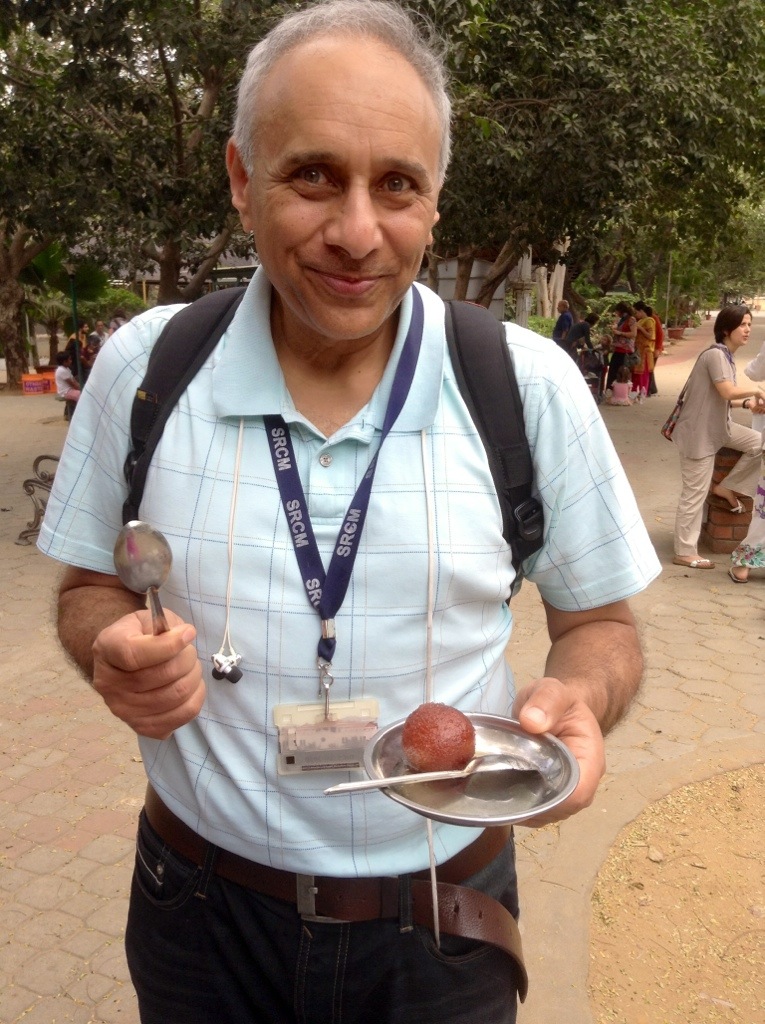#foodisbeautiful: yoga food
In America, there is a huge trendy yoga-diet movement, involving raw foods, green juices, veganism, and more. I’ve experimented with all those in New York (I used to have Vegan Wednesdays!), and they are exciting.
BUT I don’t think this is what Patanjali ate. Or any of the greatest yogis. Guruji BKS Iyengar lived in so much poverty that he didn’t have a choice, usually living on dry toast, coffee, and sometimes even tap water. Read this recent interview in the Mumbai Mirror about his life here.
And no one even knows what kale is in India…
Let’s explore what yoga has to say in regards to food. Before we begin, I just wanted to welcome you to my #foodisbeautiful series. You can read the first introductory post here.Stay tuned for the next two, coming up soon. Enjoy!
“Food is Brahma.” Food is Creation. –The Upanishads.
So, what do yogis eat? “Eat food which is pleasing, nutritive, easily digestible, and assimilated by the system,” says Iyengar.
I love this concept because it frees us from the “one size fits all” mentality when it comes to particular diets. I get a Sonia diet. You get a <your-name-here> diet!
What is ayurveda?

Iyengar says, “the body is more honest than the mind.”
It will lead you to good health. It will tell you immediately what foods it likes, what foods it doesn’t. It will tell you what makes you feel nauseous and what makes you feel strong. The mind might convince you otherwise, playing into desires and cravings, but how often is it that you don’t always like what is good for you? You just have make yourself sensitive enough to understand your body, and strong enough in willpower to honor its humble requests – this is where yoga asana comes in.
How much to eat?
I like this simple, yet eloquent line from the Bhagavad Gita: “Yoga is not a possibility for the person who overeats, or who does not eat at all and starves.” VI.16
This logic also applies in the common sensical nutritional textbook way – with your solid food, you need some liquid and some empty space in the stomach to help churn and break down the food into useable material for absorption.
Feeding the mind.
Yogic philosophy says that all food breaks up into these three parts: Gross – Middle – Subtle. The gross part is eliminated (thank goodness), the middle part builds our flesh, and the subtle part fuels our mind.
Yogis believe that the main purpose of food is to nourish and focus the mind. If a state of balance is created in the mind, the soul can progress onward! Maintenance of the body is of course, essential, but that comes naturally through yoga asana practice and a sattvic life (read the next one).
So no, actually the ancient Indian yogis really could care less about toning their bellies, building their biceps, and losing weight (even though these gifts are bestowed upon them without their notice) They are wise enough to understand that the body is perishable, yet the soul is everlasting.
What are pure foods? Embrace the sattva.
Iyengar explains that because food has an effect on the mind, any disturbance caused by the wrong food reacts on the thinking power, and thus creates confusion and delusion. In other words, pure foods purify the mind. Foods are categorized into these three gunas, or tendencies, in Ayurveda:
- Sattva means luminosity or light. Sattvic practices increase the span of life, bring cheerfulness, and are agreeable to the mind and soul. In India, ghee clarified butter and cow milk are viewed as the most sattvic foods.
- Rajas means vibrancy or dynamism. Rajasic practices bring restlessness, greed, and unpleasantness to the mind. These foods are usually bitter, sour, salty, hot, pungent, dry, caffeinated.
- Tamas means mass or inertia. Tamasic practices bring harm to the mind. These foods are often stale, stinking, cooked several times.
Not surprisingly, the yogi aims to mold all facets of his life closest to sattva. These three qualities not only apply to foods, but to lifestyle practices.
Let me give you an example… Iyengar explains that if you are eating a sattvic meal, such as dal lentils and rice, while others around you are starving, you are not embracing a sattvic path.
Similarly, my spiritual Master, Chariji, says that if you eat something that falls into the rajasic or tamasic category, like a sweet dessert, with the mind-set that you are eating for the Divine within, (rather than for the pleasure of your own taste-buds), then this meal can be of sattvic quality.
Why vegetarian?
Master says, “When we say [not to eat] non-vegetarian, we should actually be saying ‘gross’ food.” Meat is avoided in spiritual practices because it is considered to be tamasic in nature – the violent act of killing the animal as well as the animal’s own personal samskaras, or karmas, can pollute the human mind and hinder spiritual progress. So this is why yogis choose vegetarianism. —
- #foodisbeautiful: the fuel. This post is the introduction to this series. It sets up the show.
- #foodisbeautiful: tuning in to the music. This post talks about naturally healthy food habits that Indians embrace to tune-in to their bodies.
- #foodisbeautiful: the holy cow. This post discusses some cool facts about dairy in India.
Much love,





Beautifully written ! You gently but firmly made the point, ” Yes Virginia, a Yogi MUST be vegetarian ! ” Most Yoga-teachers tread on egg-shells, and squirm uncomfortably, when forced to break it down to their Yoga-students, that the Yogic Principle of Ahimsa precludes the eating of any meat or fish !